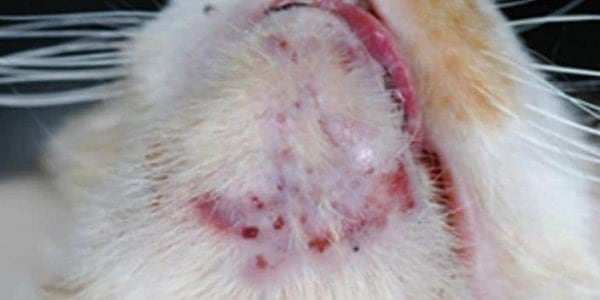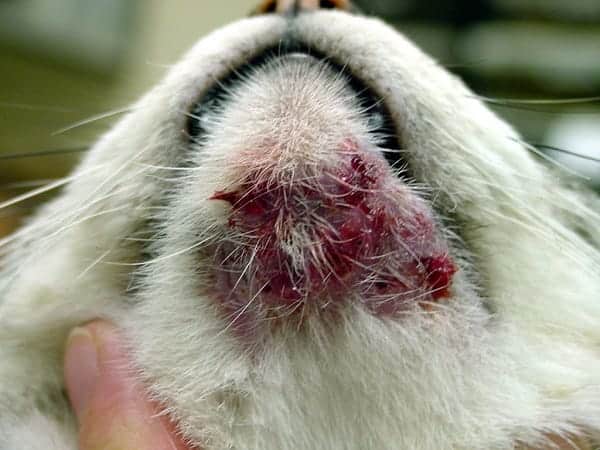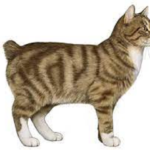Feline acne is a skin condition of cats that is seen mostly around the chin and lip margins. Hair follicles on the chin become clogged (also known as comedones). Severely blocked follicles can develop abscesses, which are filled with pus. Surrounding skin can also develop bacterial infections.

What Causes Feline Acne?
The most frustrating part of feline acne, is we don’t know what causes it. Studies show that multiple cats in the same household can develop chin acne, so there is likely a trigger of sorts as opposed to a genetic or inherited cause. Some research data suggests that a virus, possibly associated with the upper respiratory tract, may make a cat more likely to get chin acne. Other evidence points to an increased production in sebum, an oily substance produced in the skin’s sebaceous glands. This overproduction may predispose follicles to becoming clogged.
Certain diseases also increase the likelihood of feline acne. These include food and environmental allergies; eosinophilic granuloma complex; ringworm; infection with Demodex mites; autoimmune disorders such as pemphigus foliaceous; and contact hypersensitivity (e.g. skin sensitivity to certain materials or chemicals, such as plastic used in some food bowls).
What are the Symptoms of Acne?
Skin on the cat’s chin will be thick, red, and crusty. Clogged hair follicles may be visible. These appear as dark lesions or spots under the skin containing thick material. In some cats, discharge or fluid may be seen on or around the chin. Chin acne is not typically itchy or painful unless the case is severe or the cat also has other infections or diseases. Other symptoms may come from any ongoing associated diseases. For example, areas of circular, crusty hair loss may be seen with ringworm, a fungal infection.

How is Feline Acne Treated?
Feline acne is best assessed and treated by a veterinarian. Hair on and around the affected areas can be shaved to allow for better cleaning and treatment. Damaged skin will need to be cleansed with antiseptic solutions. In some cases, comedones or abscesses will need to be lanced and drained to allow for better healing.
Many cats require antibiotics, but milder cases can be improved with topical medicines alone. Topical therapies include antiseptics, antibiotics, and antifungals, depending on additional infections. Sometimes steroids are necessary to decrease the inflammation and discomfort. Steroids can be given topically (reducing systemic side effects), orally, or as a 2-3 week lasting injection.
Can Feline Acne be Prevented?
Typically, feline acne is a chronic or ongoing disease. While the initial acne and infection can be healed, additional outbreaks may occur. Some research indicates that cats with acne do not groom as well as normal cats.
You can help keep the cat’s chin and face clean and surrounding hair brushed may decrease the incidence of comedone outbreaks. Controlling any predisposing issues can also help prevent recurrence. In cases of contact hypersensitivity, changing food and water bowls from plastic and to ceramic or glass may decrease outbreaks; plastic bowls are porous and scratch easily, and are more likely than metal ones to develop cracks and crevices that hold unhealthy bacteria.
Ensure that all materials used are cleaned frequently. If allergies are an issue, discuss methods for minimizing symptoms with a veterinarian. Long-term topical therapy, such as cleansers or topical medications, may be also necessary to prevent recurrence of feline acne.


